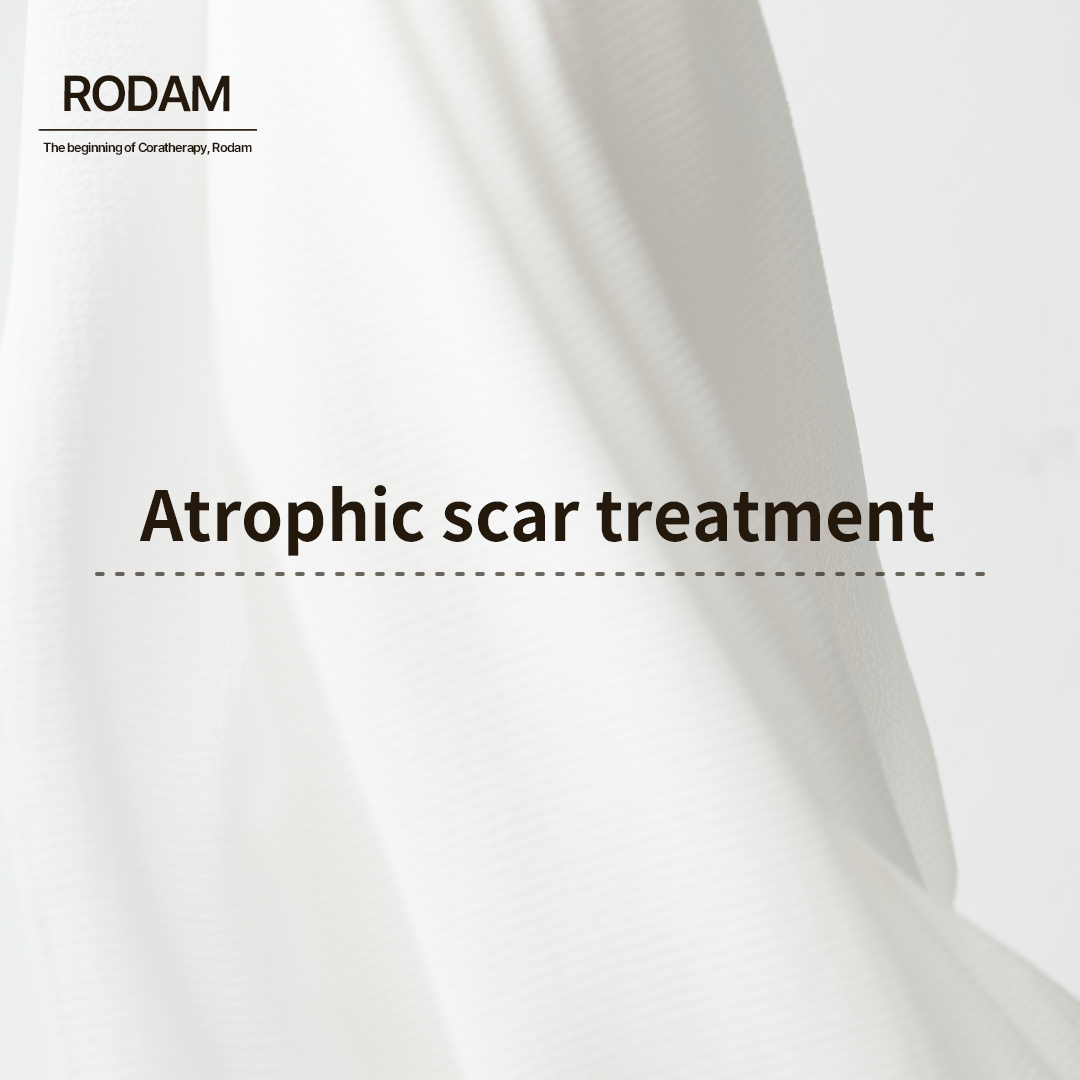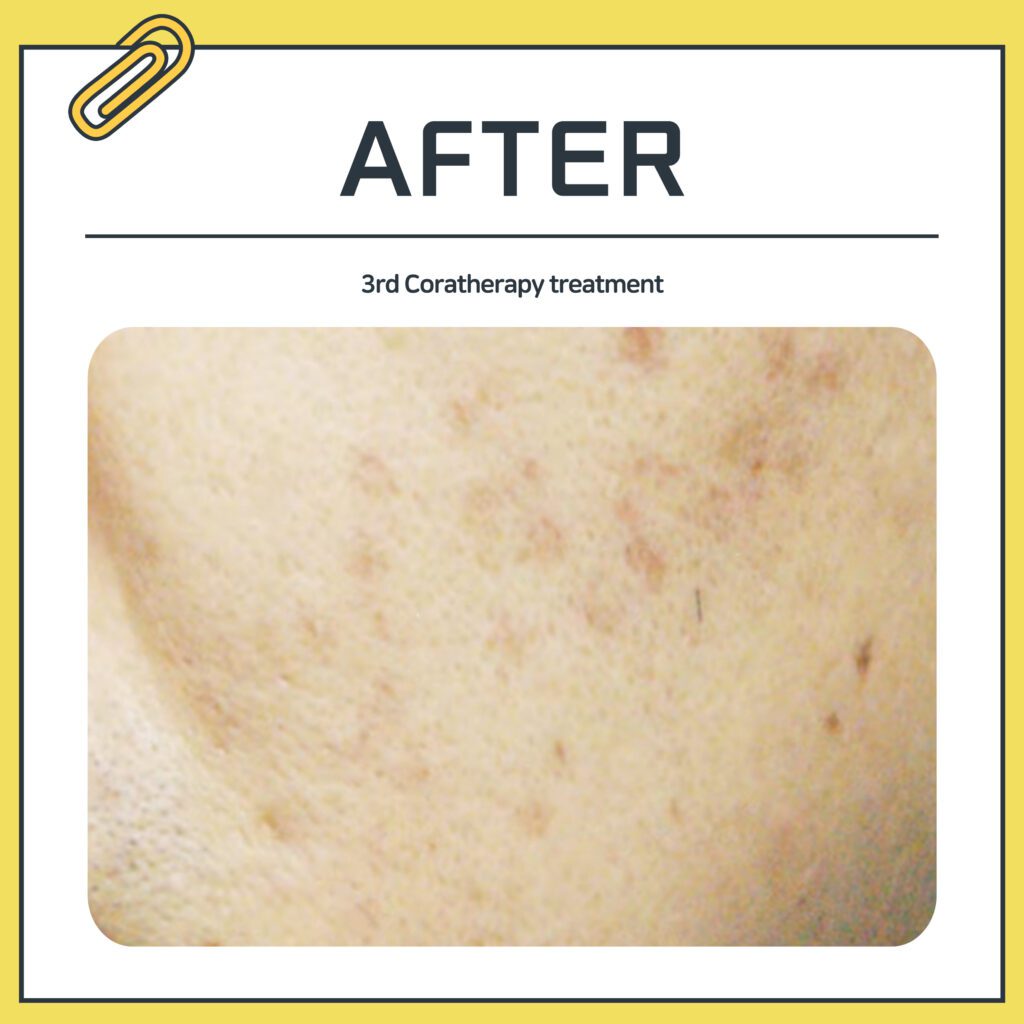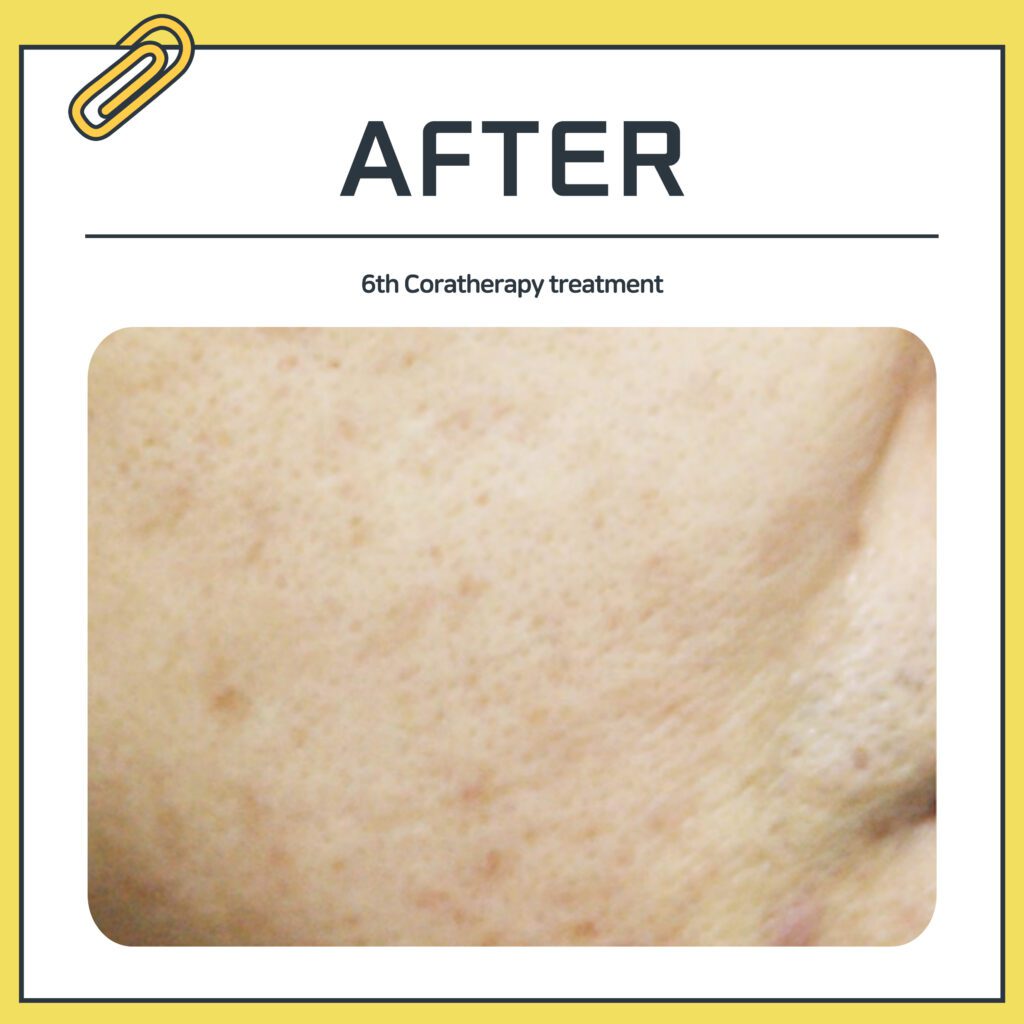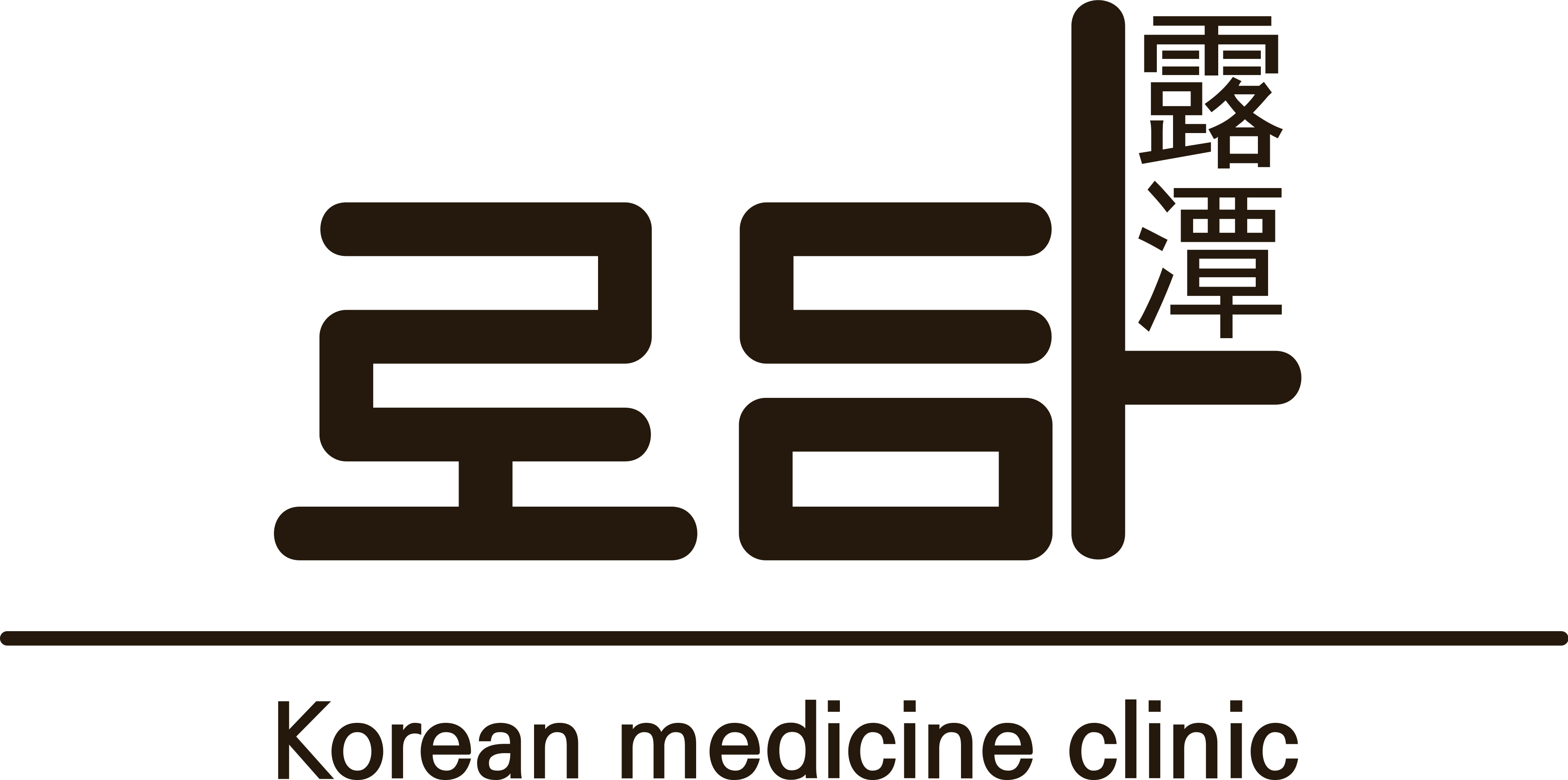
Treatment Review for Atrophic Scars at Rodam Korean Medicine Clinic with Coratherapy
Hello, this is Rodam Korean Medicine Clinic, the beginning of Coratherapy for scar removal.
Atrophic scars, commonly referred to as depressed scars, occur when collagen in the dermis layer fails to regenerate sufficiently during the skin healing process.
Atrophic scars are not just an external issue but can also be a factor that lowers self-confidence, making them a concern for many people.
Especially when scars are on the face, they can cause discomfort in social interactions or become a significant source of stress.
Today, we would like to discuss how these atrophic scars can be treated, along with actual case studies and treatment methods.

What are Atrophic Scars?
When the skin is damaged down to the dermis layer, fibrous tissue adheres, creating a sunken appearance, which is called an atrophic scar.
These scars mainly occur as a result of acne, wounds, or surgeries,
and they form because collagen in the dermis layer fails to regenerate sufficiently during the skin healing process.
Atrophic scars are not just an external issue but can also be a factor that lowers self-confidence,
making them a concern for many people.
Especially when scars are on the face, they can cause discomfort in social interactions or become a significant source of stress.
These atrophic scars are difficult to heal naturally and require medical intervention.
One of the most chosen methods by many is Coratherapy.

What is Coratherapy?
Coratherapy, which began at Rodam Korean Medicine Clinic in 2006,
uses micro-needles to stimulate the adhered tissue beneath the scar,
encouraging the space to be filled with collagen and fibroblasts naturally produced by the body.
Since no artificial drugs or substances are injected and the skin’s natural regeneration is utilized,
there is minimal skin damage, and there is almost no scabbing or oozing, causing little inconvenience to daily life.
Additionally, as it aims for fundamental treatment by promoting the growth of new skin,
it is an effective treatment method for resolving the issues of atrophic scars and restoring healthy skin.
This can be confirmed more definitively through testimonials.
Testimonials for Coratherapy


Case :: Atrophic Scars on the Cheeks
History :: No prior treatment experience
Report :: 6 sessions of Coratherapy + VSM care
In this case, we would like to share the testimonial of a patient who was concerned about atrophic scars.
Before the procedure, the patient’s skin was uneven due to scars, and the skin tone was not uniform.
After the first session, the skin began to show slight reactions,
and by the third session, the depth of the scars had noticeably reduced.


After completing up to the fifth session, the skin texture became much smoother,
and the skin tone around the scars also improved.
In the final sixth session, VSM care was added to further refine the skin texture.
By looking at the before-and-after photos of this patient and many others,
it can be seen that the skin becomes gradually smoother, and the discoloration improves,
reducing the contrast with the surrounding skin.
For this reason, Rodam Korean Medicine Clinic’s Coratherapy has received very positive feedback from actual patients.
The dramatic effects and minimal side effects are highly praised,
and patients have expressed great satisfaction, especially with scars that were previously considered difficult to treat.
As such, Coratherapy creates a recovery environment where the skin can regenerate itself,
bringing meaningful changes to the treatment of atrophic scars.
There is no such thing as an impossible scar to treat, whether it is a difficult or old scar.
If you are still hesitating, we recommend at least getting a consultation.
Experienced medical professionals with extensive know-how in scar treatment
are waiting to assist you.

